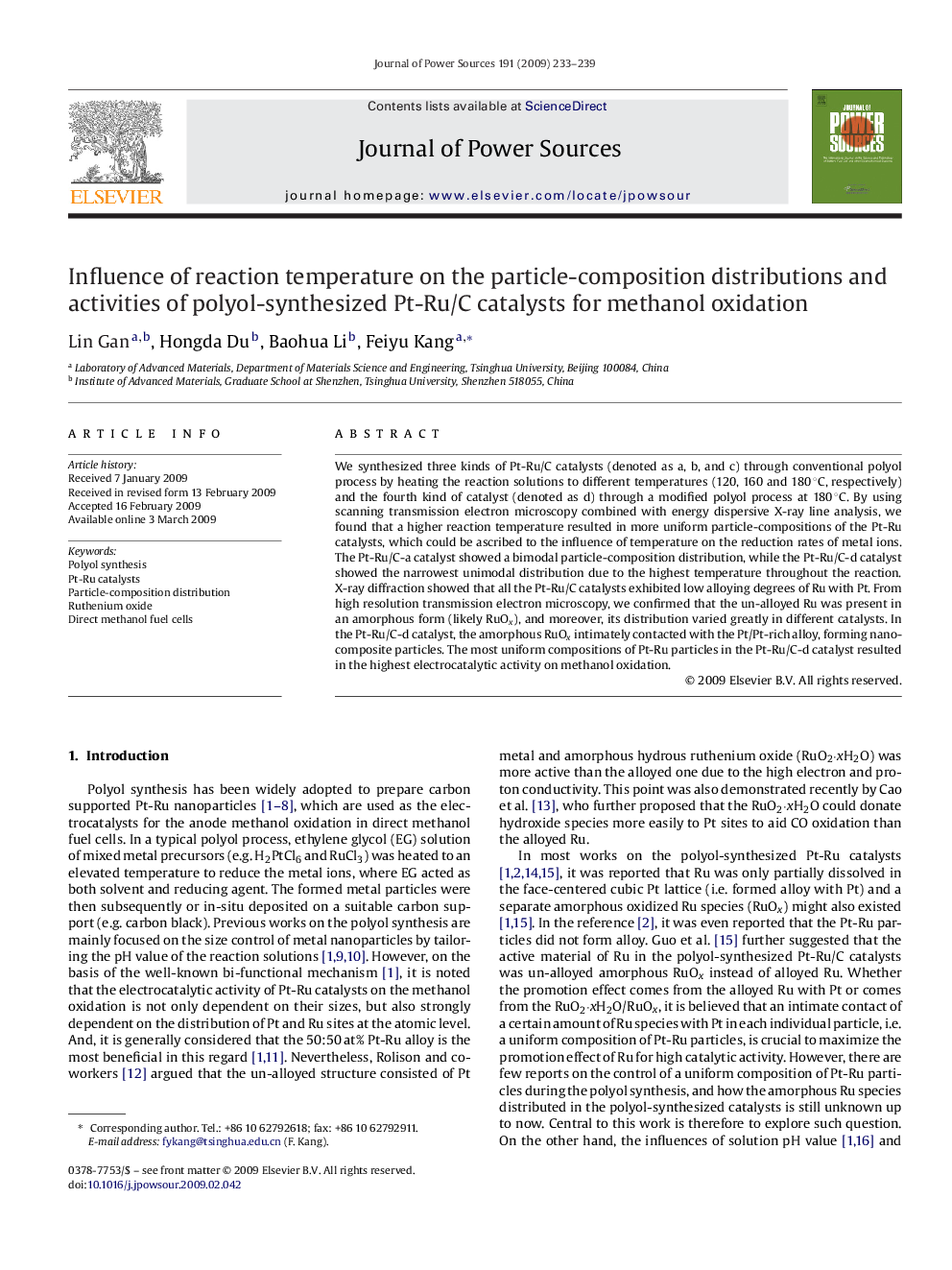| کد مقاله | کد نشریه | سال انتشار | مقاله انگلیسی | نسخه تمام متن |
|---|---|---|---|---|
| 1289709 | 973306 | 2009 | 7 صفحه PDF | دانلود رایگان |

We synthesized three kinds of Pt-Ru/C catalysts (denoted as a, b, and c) through conventional polyol process by heating the reaction solutions to different temperatures (120, 160 and 180 °C, respectively) and the fourth kind of catalyst (denoted as d) through a modified polyol process at 180 °C. By using scanning transmission electron microscopy combined with energy dispersive X-ray line analysis, we found that a higher reaction temperature resulted in more uniform particle-compositions of the Pt-Ru catalysts, which could be ascribed to the influence of temperature on the reduction rates of metal ions. The Pt-Ru/C-a catalyst showed a bimodal particle-composition distribution, while the Pt-Ru/C-d catalyst showed the narrowest unimodal distribution due to the highest temperature throughout the reaction. X-ray diffraction showed that all the Pt-Ru/C catalysts exhibited low alloying degrees of Ru with Pt. From high resolution transmission electron microscopy, we confirmed that the un-alloyed Ru was present in an amorphous form (likely RuOx), and moreover, its distribution varied greatly in different catalysts. In the Pt-Ru/C-d catalyst, the amorphous RuOx intimately contacted with the Pt/Pt-rich alloy, forming nano-composite particles. The most uniform compositions of Pt-Ru particles in the Pt-Ru/C-d catalyst resulted in the highest electrocatalytic activity on methanol oxidation.
Journal: Journal of Power Sources - Volume 191, Issue 2, 15 June 2009, Pages 233–239